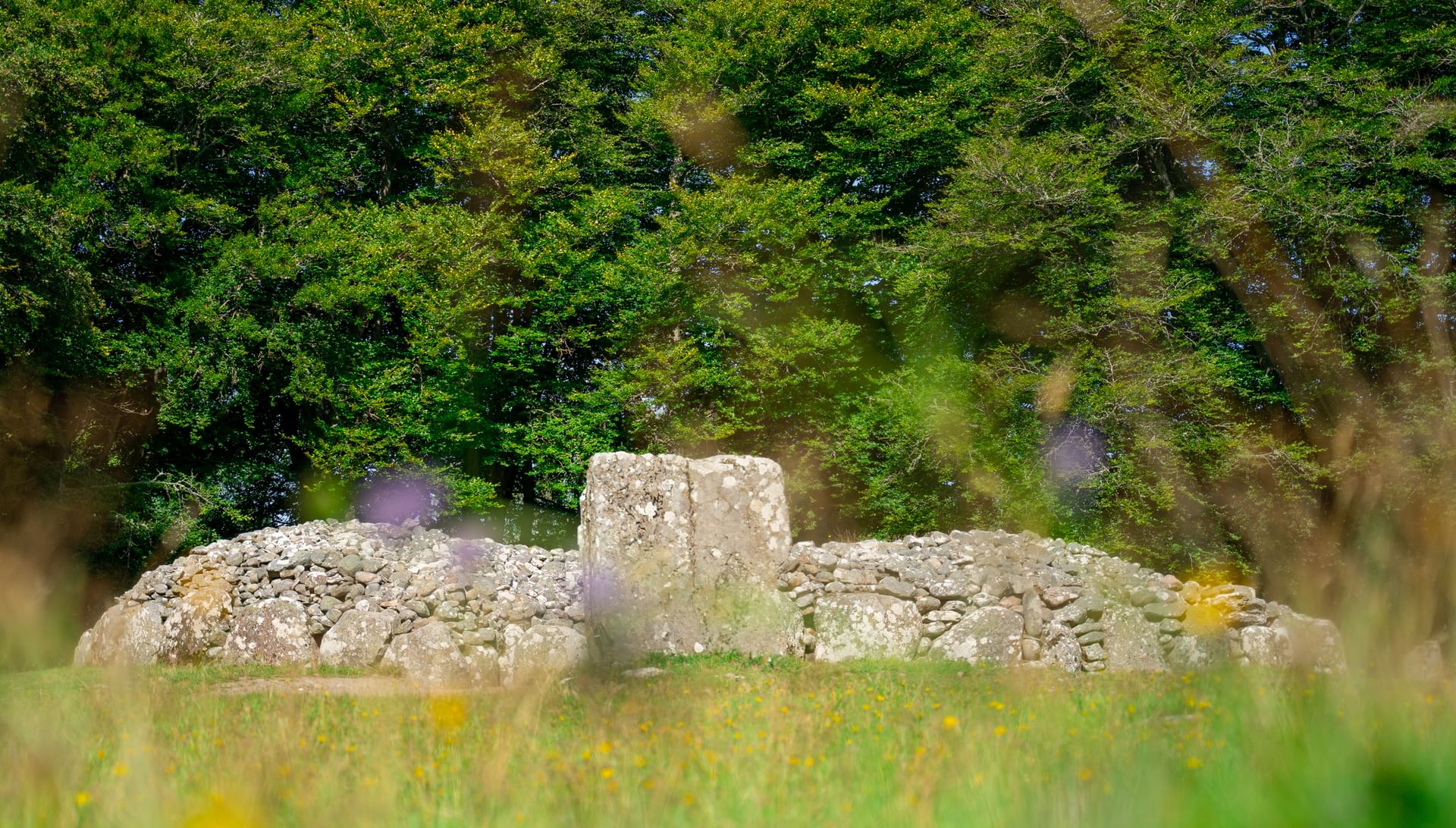Discover all the outlander locations in Inverness and Loch Ness
Get the most from your Outlander experience in Inverness with this insightful and informative blog written by local fans of the books and TV series.
Inverness Outlanders are a small group of Outlander fans living in and around Inverness who met through a love of Diana Gabaldon’s Outlander book series and the subsequent Starz TV series. Here the group shares some of the fascinating Outlander connections they are lucky to have on their doorstep - some within walking distance of the city centre and others within a short drive of Inverness.
Even if you’re not an Outlander fan, haven’t read any of the books, or made a start on the TV series you’ll still find this fascinating and informative because the locations take you through the history, culture and clans of the area, going as far back as 4000 years. Taking in standing stones, castles and battlefields as well as forest walks and trails, lochs and coastal routes. Outlander fans will relish the opportunity to walk in the footsteps of the Fraser and MacKenzie clans who dominated this landscape in the 18th century.
Fort George
The imposing structure of Fort George, built in the aftermath of the Battle of Culloden as a secure base for King George II’s army and as a deterrent to any further Jacobite Risings, is arguably the most impressive 18th century fort in Britain. It took 22 years to build but, by the time it was completed in 1769, the Jacobite threat was all but gone.
Remarkably, little has changed at Fort George since its completion, and it has been home to regiments of the British army now for over 250 years. It is still an active military base to this day, and is currently the home of the Black Watch, 3rd Battalion The Royal Regiment of Scotland.
It also houses The Highlanders’ Museum which tells the stories of the many Highlanders who served in one of regiments that was raised from the region in the late 1700s. The Highlanders’ Museum is home to around 20,000 artefacts and an estimated 10,000 documents and photographs. It is the largest military museum in Scotland, outside of Edinburgh.
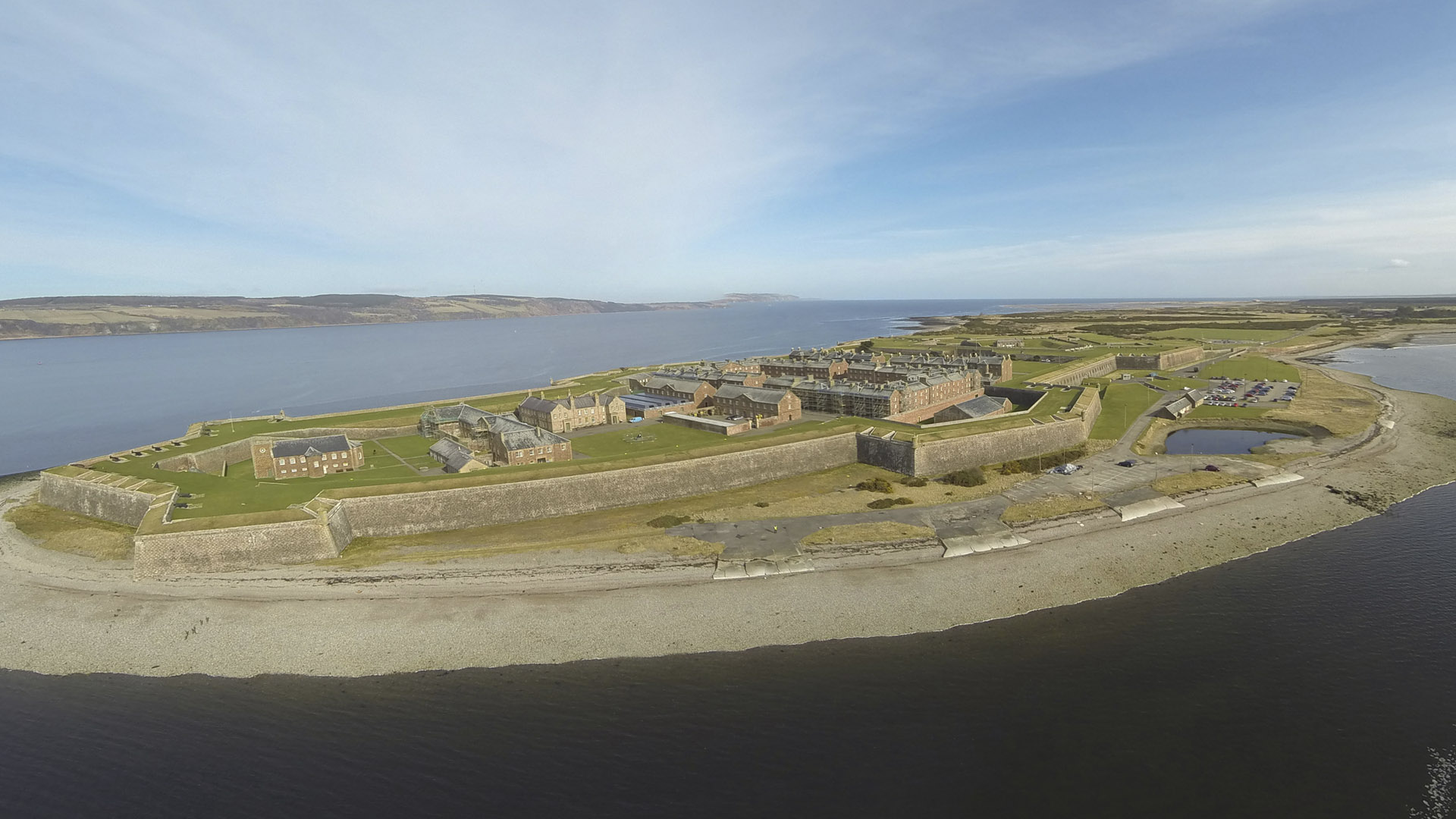
Clava Cairns
The Clava Cairns are the remains of an ancient cemetery, set on a terrace above the River Nairn. About 4,000 years old and built to house the dead, the three exceptionally well-preserved bronze age burial chambers, each surrounded by a circle of standing stones, sit in a quiet, leafy setting.
The cairn builders left no written records, but clues to their beliefs survive, and the construction of the cemetery suggests that midwinter was an important time of the year for this society. The standing stones also suggest a focus on the midwinter sunset – they are graded in height with the tallest facing the setting sun in the southwest. Dating from around 2000BC, the cairns are part of a wider group of some 50 cairns in the region of the Moray Firth and Inverness and were reused by successive communities.
Outlander fans will be delighted to discover that one of the standing stone monoliths is much like the standing stone at Craigh na Dun which Claire travelled through in the Outlander TV series; and another is a split rock, as described by Diana in the first book of the series.
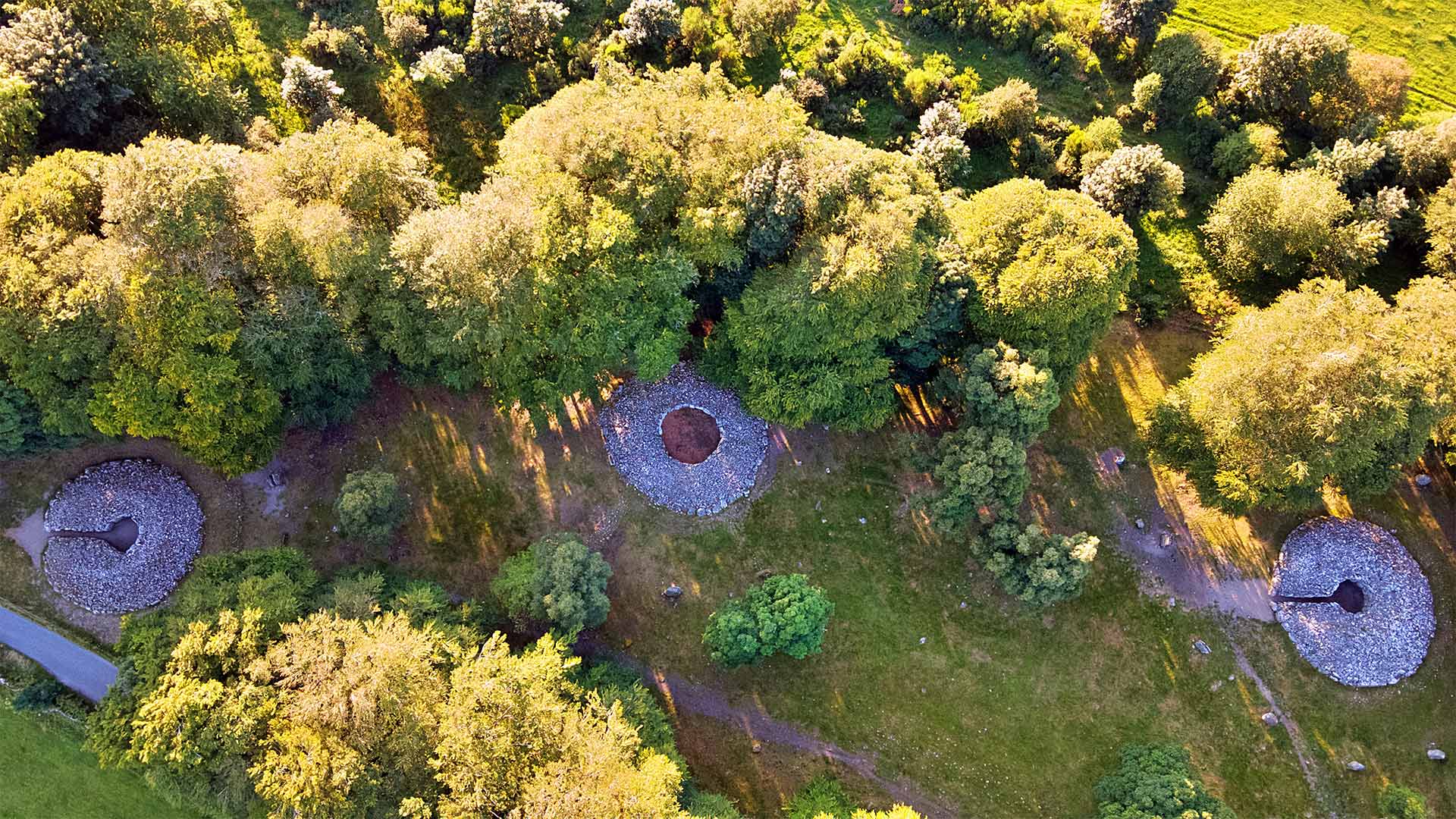
Culloden Battlefield
The final confrontation of the 1745 Jacobite Rising, and the last ever pitched battle to be fought on British soil, took place on Culloden Moor on the outskirts of Inverness on 16th April, 1746.
The Battle of Culloden - the heart of the Outlander story - saw a well-supplied Hanovarian Government army led by the Duke of Cumberland, son of King George II, face the forces of his cousin Charles Edward Stewart, aka Bonnie Prince Charlie who had the intention of restoring the House of Stuart to the British throne. Having failed in their attempt to gain support in England and advance on London, the Jacobites had retreated, undefeated, back to Scotland arriving at Inverness with a force of around 5,500. On the rain-soaked morning of the battle, the Government army of around 8,000 took up their positions. The battle commenced at 1pm and within an hour it was over. 1300 died, 1250 of whom were Jacobites.
Over the weeks that followed, many of the Jacobites who managed to escape the battlefield were hunted down and killed. Charles himself evaded capture for five long months, eventually making good his escape to France and final exile. Today, the National Trust for Scotland has the responsibility for the conservation and restoration of the battlefield, and a visitor centre houses a first class exhibition, café, shop and rooftop viewing platform.
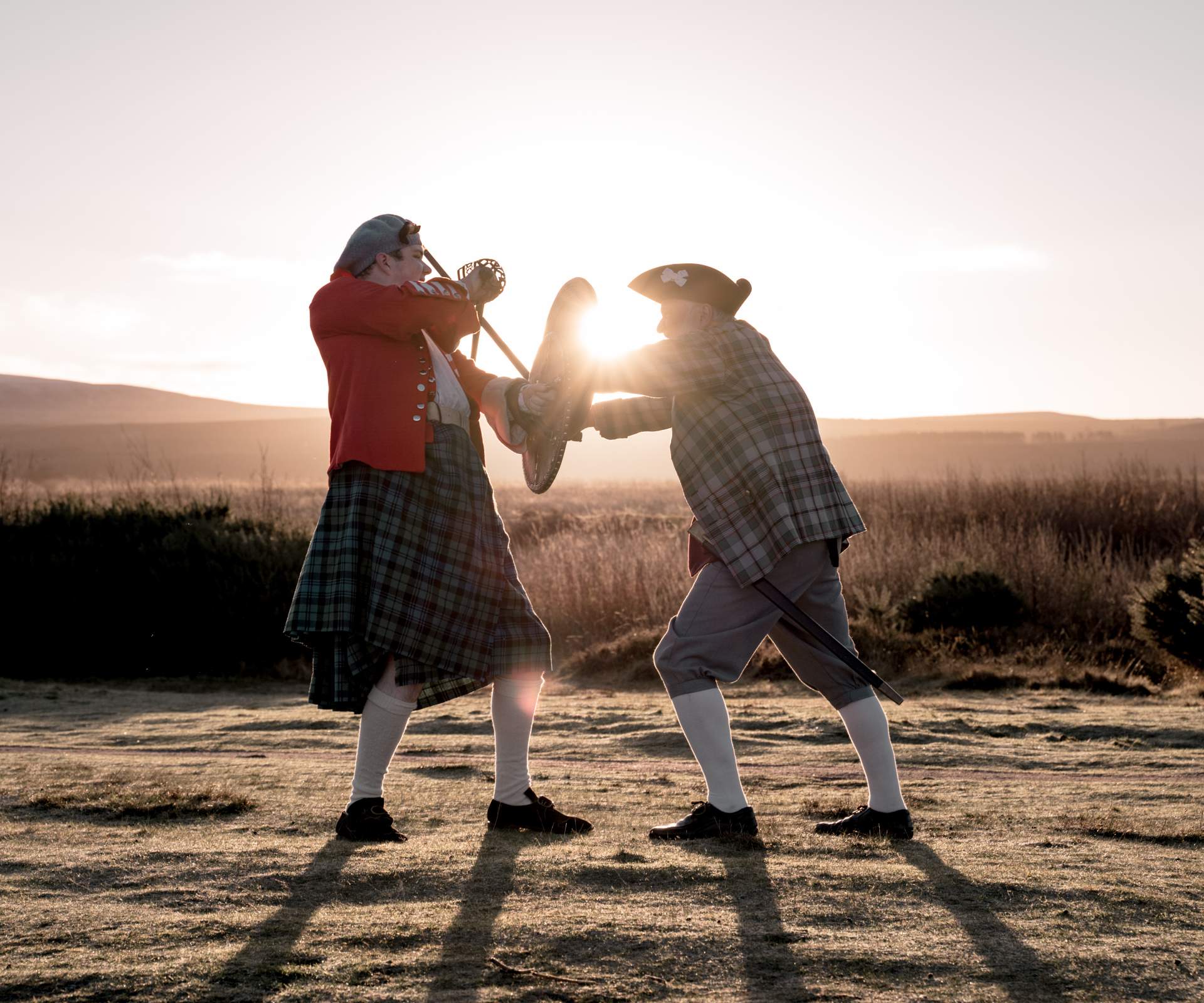
Culloden House
The impressive gates looking up the circular driveway towards Culloden House lead to an imposing Georgian mansion house set in open parkland. Today’s Culloden House, already over 200 years old is not the first house to stand on this site. Originally it was a 16th century Jacobean castle and parts of the house date back to this time.
In 1746 it was in the possession of Duncan Forbes of Culloden, Lord President of the Court of Session and ardent supporter of the Hanovarian cause. However, the house was requisitioned by Prince Charles Edward Stuart three nights prior to the Battle of Culloden and used as his lodging and battlefield headquarters. After the battle, wounded Jacobite soldiers taking refuge in one of the 12 vaulted cellars would have waited out their inevitable fate here at the hands of ‘Butcher’ Cumberland.
Culloden House was renovated in the 1770s and it must have looked splendid in its Georgian heyday with its sweeping staircase, delicate plasterwork, finely moulded Adam fireplaces and beautifully carved doorways. Only a back wall of the original building remains today.
It became a hotel in the 1970s, and it’s somewhere Diana Gabaldon loves to visit when she’s in the area. There’s a seat dedicated to her in the Walled Garden.
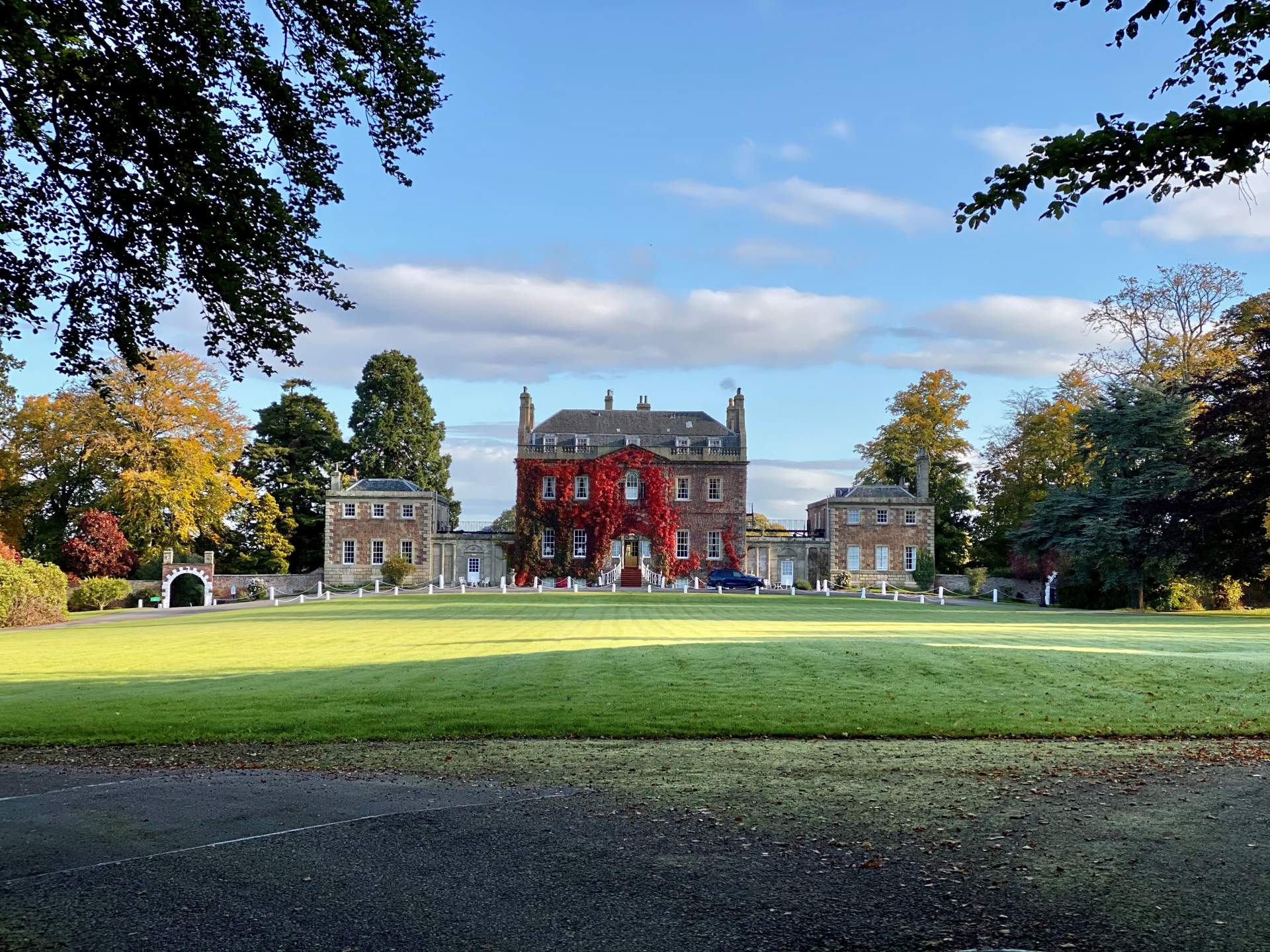
Culloden Trail
This circular six mile (10km) trail allows you to explore the wider story of Culloden, linking Culloden Wood, Culloden Battlefield and the Cumberland Stone with local communities, fields and forests. You can start from either the Culloden Wood car park or Culloden Battlefield car park.
En route you will see the Prisoners’ Stone where British Government troops shot 17 Jacobite prisoners on the day after the battle; the Lord President’s Seat is a stone dedicated to the local laird Duncan Forbes of Culloden House who supported the British Government in the 18th century but pleaded for humane treatment of the Jacobites after the Battle of Culloden; St Mary’s Well, an ancient healing well; and Cumberland’s Stone, where it is said that the Duke of Cumberland may have had breakfast or lunch on the table-flat top of the boulder on the day of the battle. There are helpful interpretive panels around the route.
Although the path network is wide, you should bear in mind it can be uneven and steep in places and can get quite muddy.
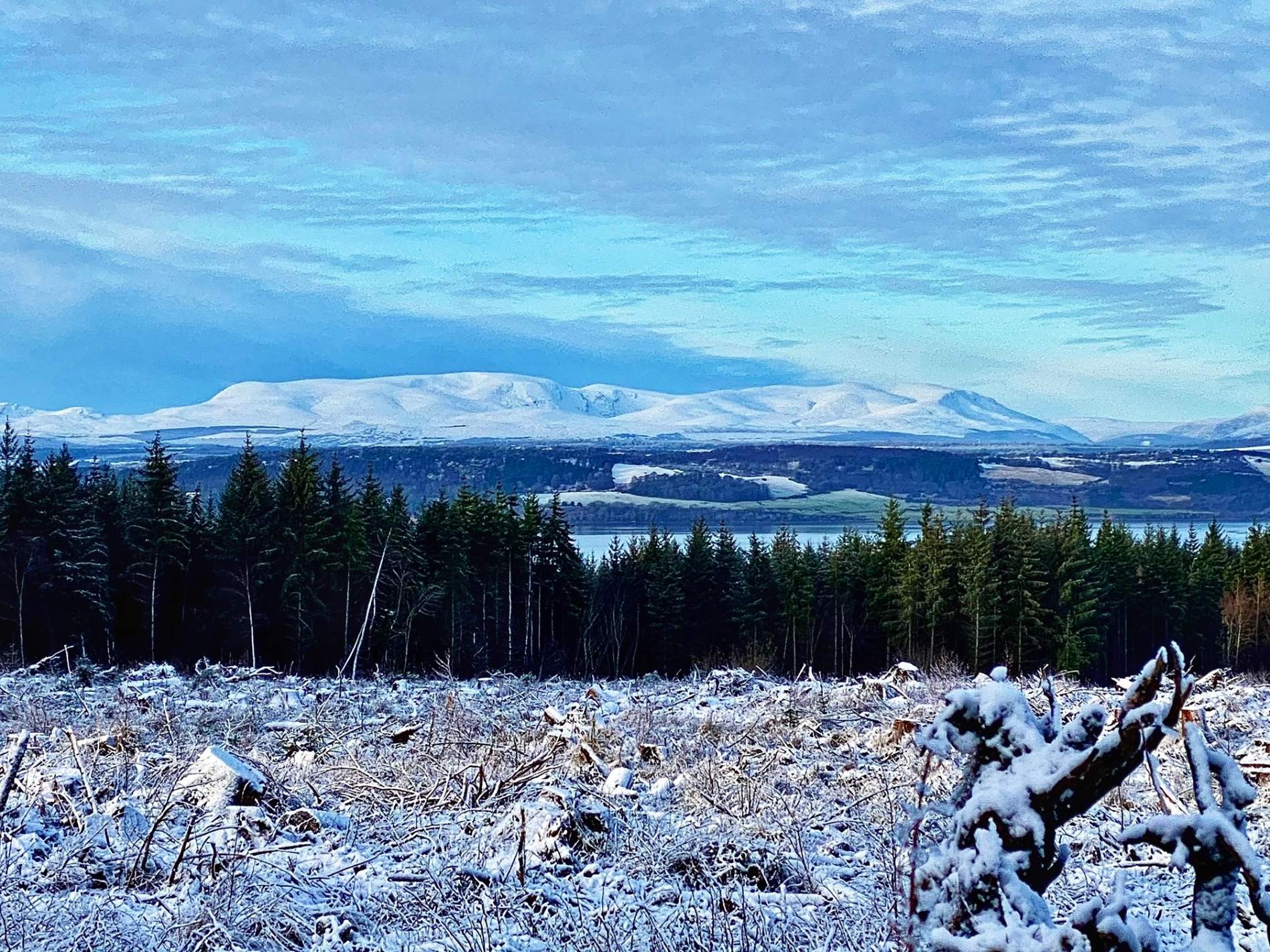
Loch Ness
Loch Ness is probably Scotland’s best-known loch, not least because it boasts its very own monster. But there’s much more to Loch Ness than just a monster. It is the largest body of fresh water in Britain and, in fact, there is more water in Loch Ness than all the other lakes in England, Scotland and Wales put together. Loch Ness sits in the Great Glen, a geological fault line visible from space, which occurred over 400 million years ago and which runs diagonally for over 60 miles splitting the Highlands from Inverness to Fort William.
The modern legend of the Loch Ness Monster was born in May 1933 when the Inverness Courier reported an account of a local couple who claimed to have seen an enormous animal rolling and plunging on the surface. A media phenomenon ensued, sonar expeditions were undertaken to detect the monster, amateur investigators kept a constant vigil and since then over a thousand sightings have been recorded.
In the first book in the Outlander series, Chapter 19 is entitled ‘The Waterhorse’ and it tells of Claire’s good fortune at seeing the monster. Even though a famous photograph of the monster taken in 1934 was declared to be a hoax 60 years later, visitors still flock to the loch in their thousands hoping for a glimpse or, better still, ‘the’ conclusive photograph of the elusive Nessie.
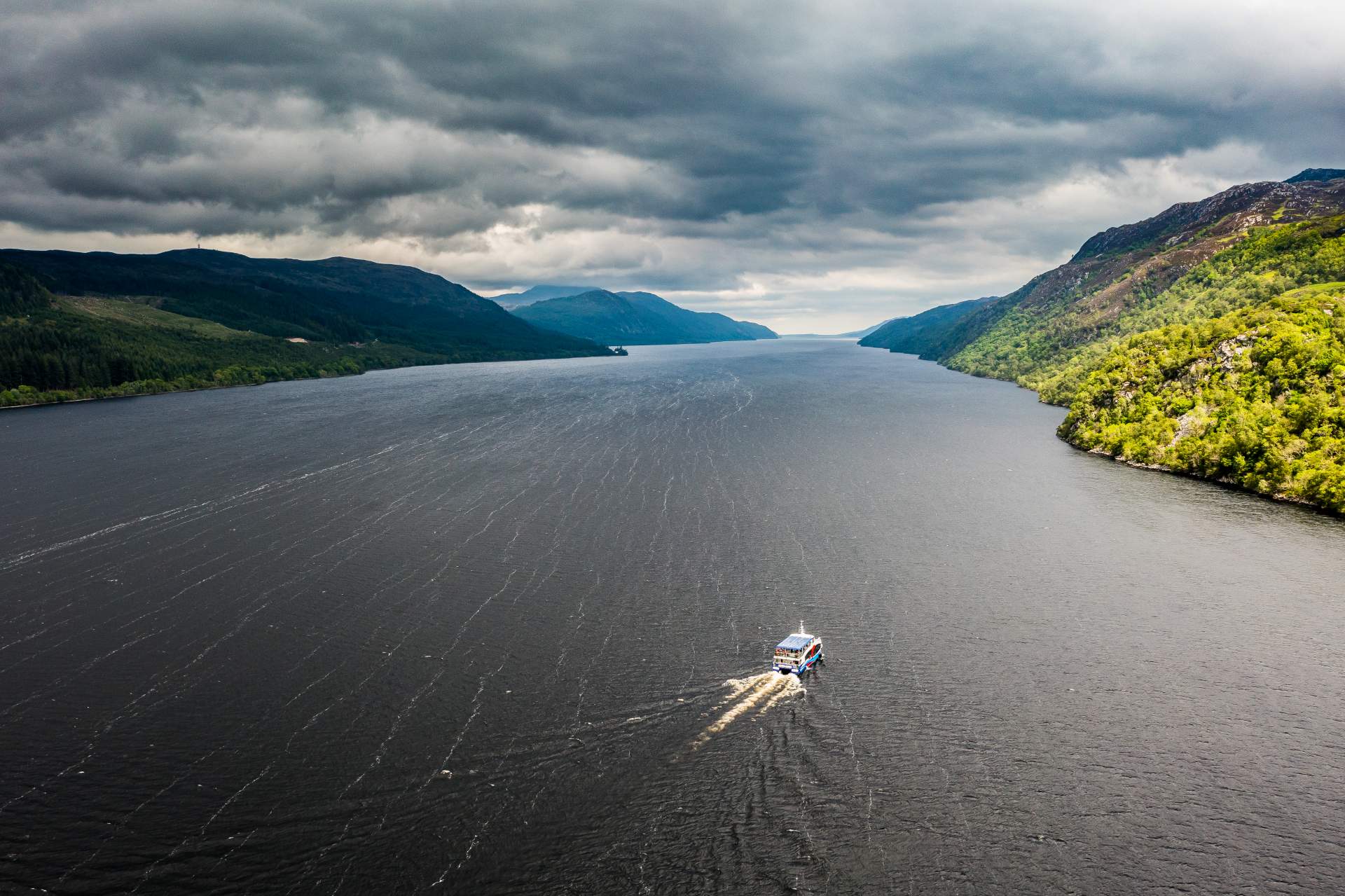
Urquhart Castle
Urquhart Castle sits on the edge of Loch Ness with spectacular views toward Inverness in the north and Fort Augustus in the south. The site on which the castle stands has been occupied for at least 1300 years, with one of the first recorded mentions of the site dates to a visit by St Columba in the 7th century. During that time it wasn’t a grand stone castle but rather a small wooden palisade, and much of the present ruin was built in the 13th century.
The castle changed hands many times before finally being retained by the Scots. During the 15th and 16th centuries, the MacDonald clan would continuously attack the area and the castle in an attempt to exert their power and hold. One last assault, known as The Great Raid, saw anything that could be removed being removed, including windows and doors. By the late 17th century, war was at the castle’s door once more. This was the beginning of the Jacobite wars, and the Grants who held Urquhart Castle at this time were loyal to the new king and queen in London. With only 200 men, the Grants held the castle against Jacobite siege. With the end of the Jacobite Rising in 1690, the Grants decided to blow up the castle to prevent it falling into enemy hands in the future.
Further damage was sustained in 1715 during a terrible storm, with one corner of the large Grant tower being struck by lightning. Breaking, it slipped into the loch and gave us the view we see today. This is the same view seen by Frank and Claire as they sail down Loch Ness on their second honeymoon. The castle is currently protected and cared for by Historic Environment Scotland.
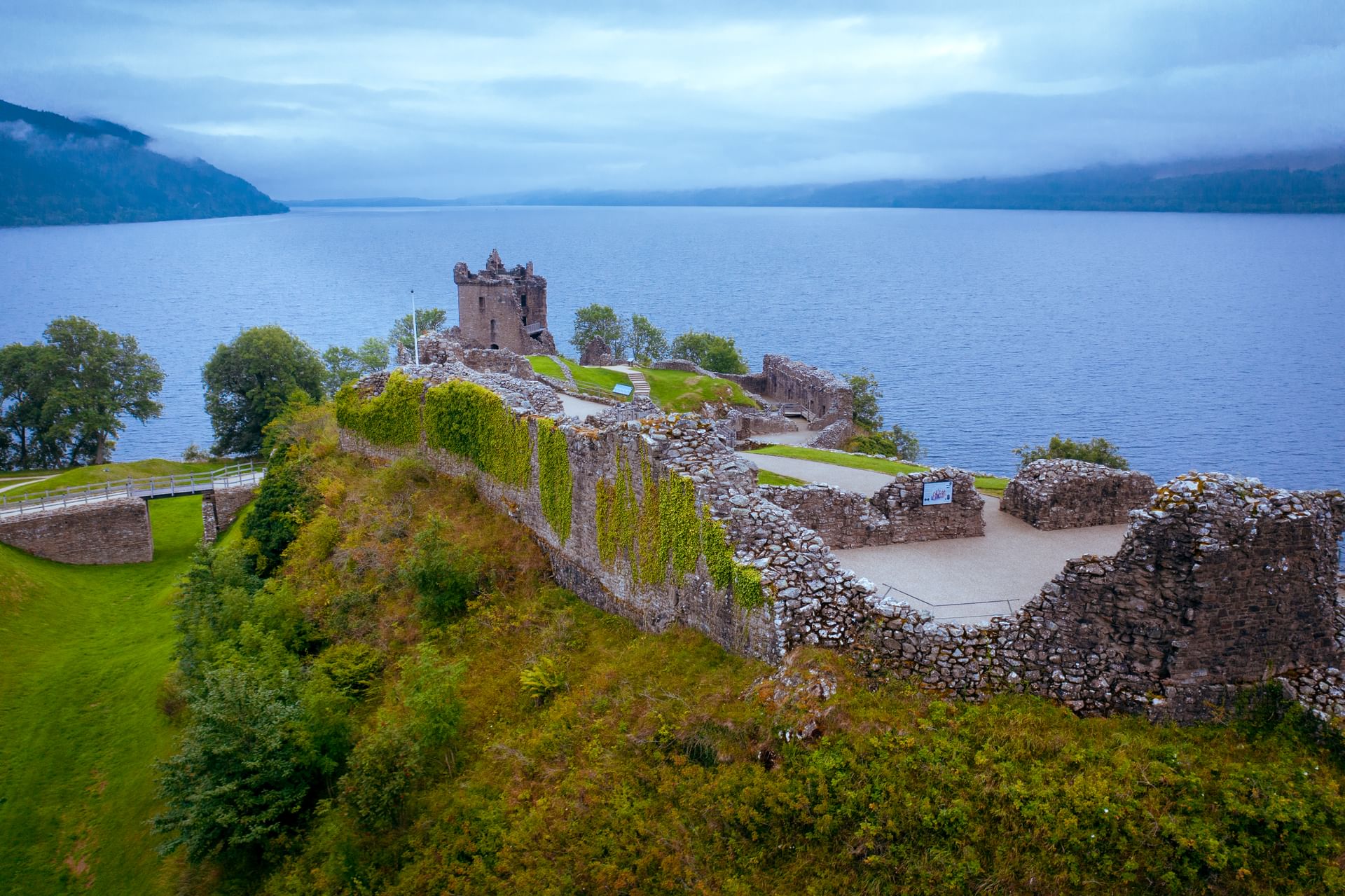
Corrimony Cairn
The Corrimony Chambered Cairn, situated in a beautiful glen eight miles west of Drumnadrochit, is a remarkably well preserved ‘Clava type’ burial cairn complete with standing stones. This ancient grave is thought to be over 4,000 years old and demonstrates the skills and planning of its prehistoric builders. It is also the location where Brigadier General Simon Fraser was buried in the seventh book in the Outlander series, An Echo in the Bone.
The cairn at Corrimony would once have had a corbelled roof completely enclosing it, which was probably capped with the large slab which now lies on top. The slab is decorated with a series of cup-marks, which are typical of prehistoric rock art.
The cairn is surrounded by a ring of eleven standing stones; there is space in the ring where you would expect a twelfth stone to stand but excavation suggested that it was probably never put in place.
Excavation also revealed traces of a crouched burial, probably a woman, beneath an area of stone floor. No artefacts were found with the burial, but a bone pin was found elsewhere in the cairn.
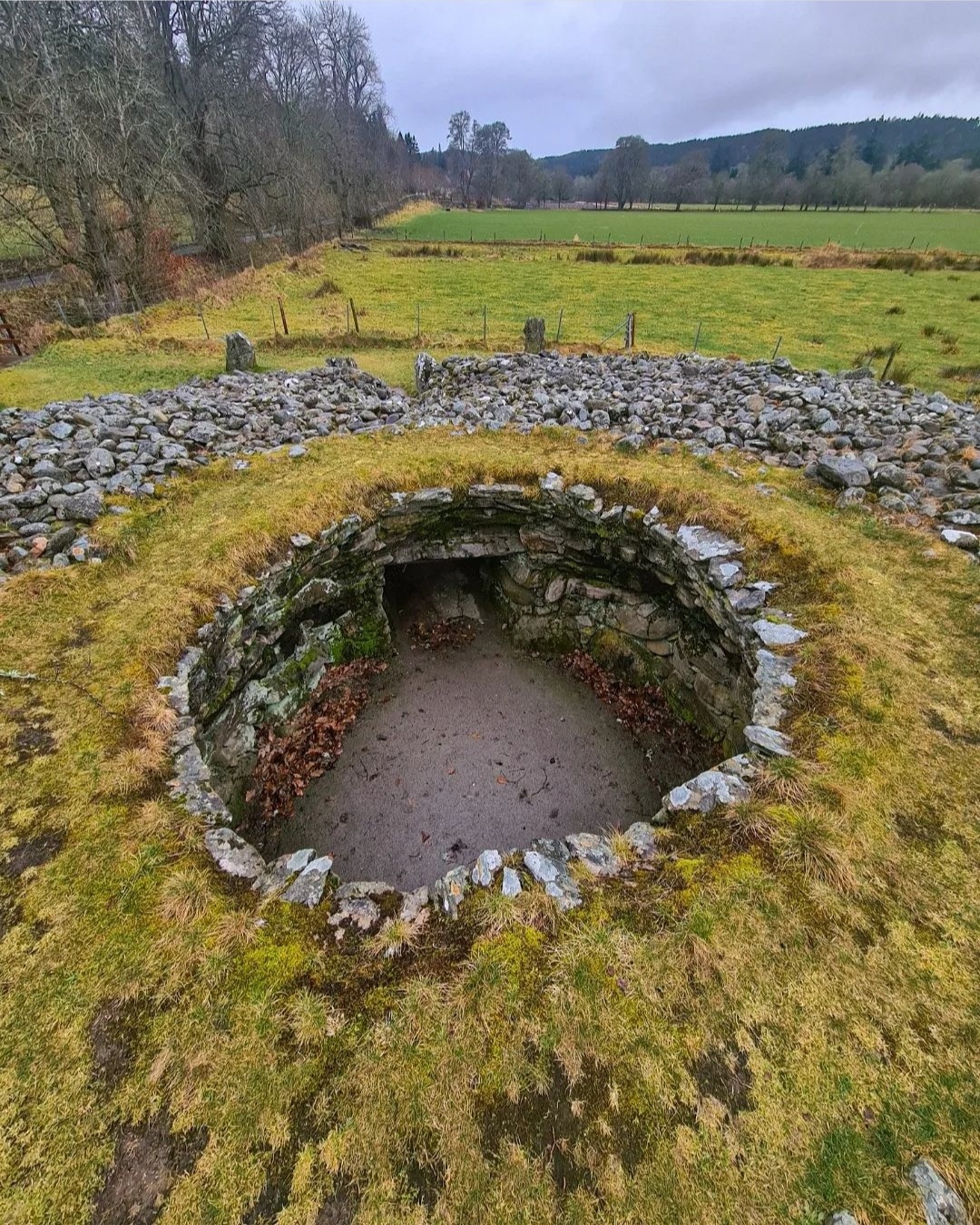
Reelig Glen
Reelig Glen is a narrow, steep sided gorge by the rushing waters of the Moniack Burn. The glen offers a beautiful woodland walk right in the heart of Fraser country, through a mixture of old conifer and broadleaved trees which are known to be some of the tallest in Britain.
The tallest Douglas Fir here has been measured at 62 metres (204 feet) and, after a local competition, it was named Dughall Mor, meaning Big Douglas. The same Fraser family owned this area for over 500 years, and the present character of the glen owes much to James Baillie Fraser, the 19th century Scottish explorer, who planted many of the trees which are found here today.
The circular walk follows well maintained paths and at the top of the walk there is a stone bridge and a grotto. The Frasers sold Reelig Glen in 1949, since when it has been under the management of the Forestry and Land Scotland.
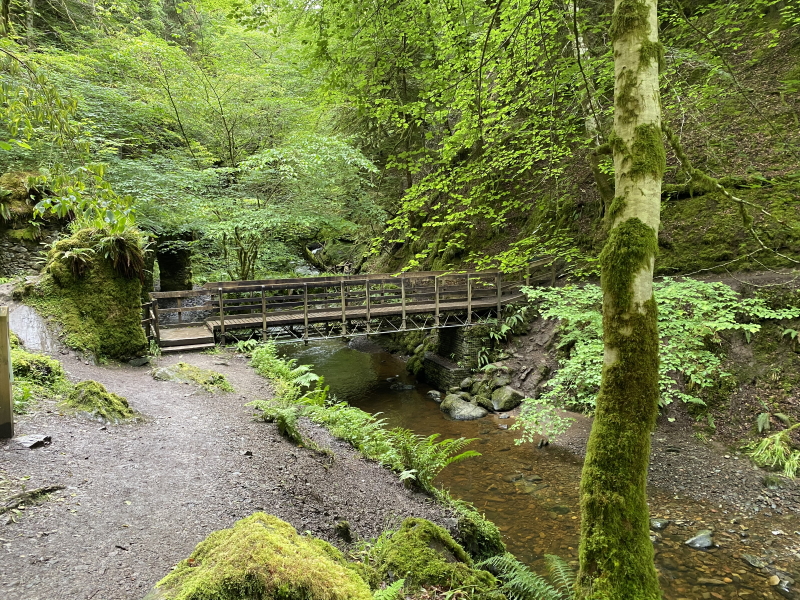
Wardlaw Mausoleum
Wardlaw Mausoleum lies 8 miles west of Inverness in the heart of Fraser country. Built in 1634 and attached to the ruins of the original church built in the 1200s, it is the traditional burial place of the chiefs and leading gentry of clan Fraser of Lovat. It was modernized in 1722 by one of the greatest chiefs, Simon Fraser, Lord Lovat, better known as the ‘Old Fox’ given his double dealings between Jacobites and the Government, and also as Jamie Fraser’s grandfather in Outlander. Lovat raised the roof, added the bell tower at the east end and totally changed the interior including a commissioned memorial to his late father.
The Lovats were buried here until the early 1800s. After than the building fell into disrepair until the 1990s when the Wardlaw Mausoleum Trust was formed to rescue and restore it. The Mausoleum is listed as Grade ‘A’ by Historic Environment Scotland and has the highest level of importance.
There is a long-held tradition that Jamie’s grandfather, Simon Fraser, was secretly transported back to the Highlands by his supporters after his beheading at the Tower of London in 1747. But a recent exhumation of a double lead-lined coffin in the Mausoleum’s family crypt led to the discovery of a woman instead. We feel sure that the ‘Old Fox’ would be enjoying the controversary surrounding his whereabouts all these centuries later.
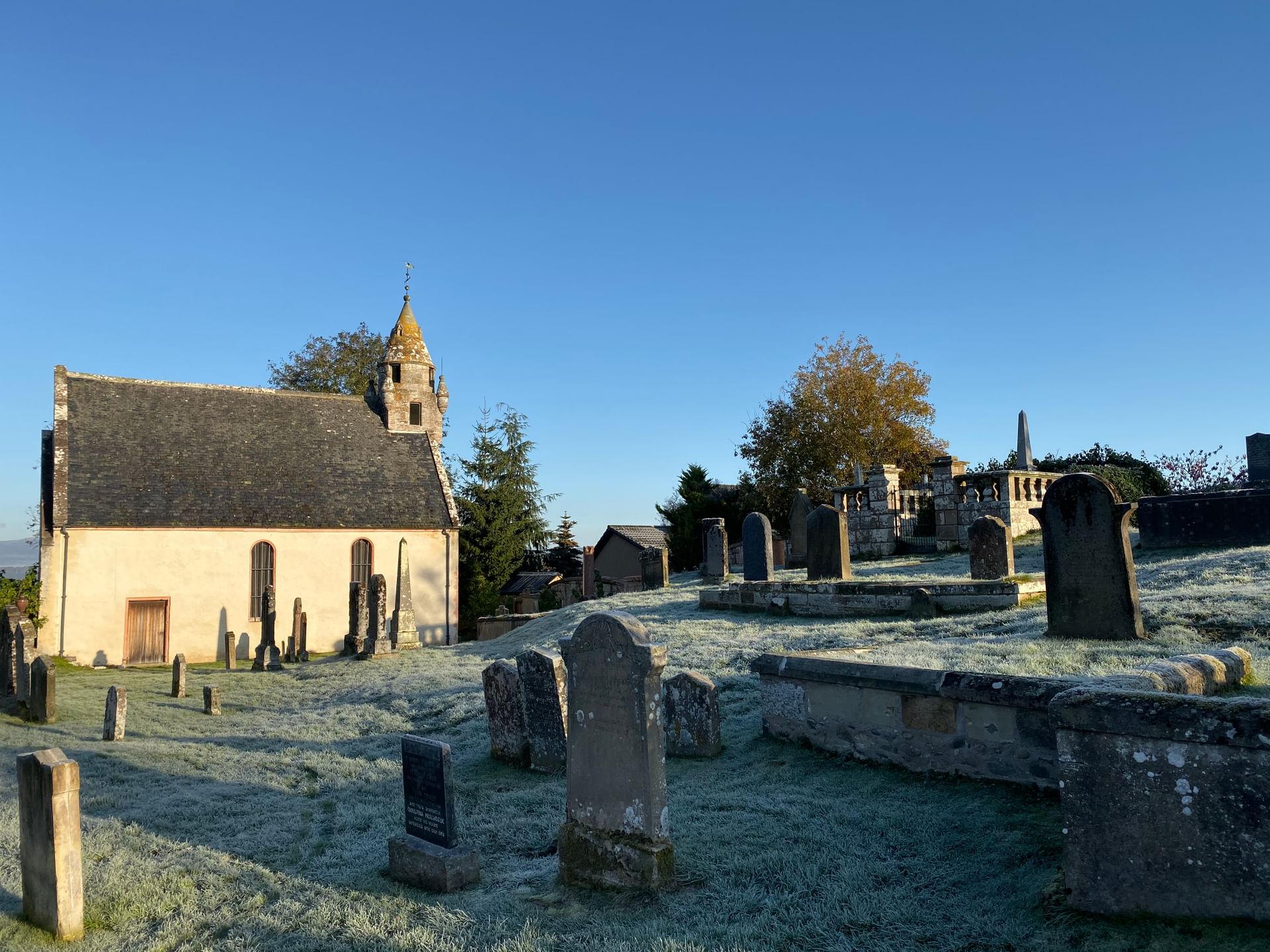
The Beauly Priory
Beauly Priory dates back to 1230 and is one of three priories (or monasteries) founded in Scotland in the 13th century for monks of the Valliscaulian order. The Valliscaulians came from the Burgundy region of France, and adhered to strict ideals of poverty, chastity and obedience, with only the Prior having access to the outside world.
The Frasers of Lovat and the MacKenzies have been associated with the Priory for centuries. As you walk around the ruins you will see many tombs for both clans, the oldest MacKenzie tomb dating as far back as 1479.
After the Reformation the priory fell into disuse. The lead was removed from the roof in 1582, and much of the stone was used for the construction of other buildings in the town and as far afield as Inverness. Only the abbey church still stands today, housing some very fine funerary monuments.
In Outlander, Claire comes across the Seer Maisri at Beauly Priory while she and Jamie are visiting his grandfather, Lord Lovat (Simon, the ‘Old Fox’) at nearby Doune Castle (now Beaufort Castle) prior to the Jacobite Rising of 1745.
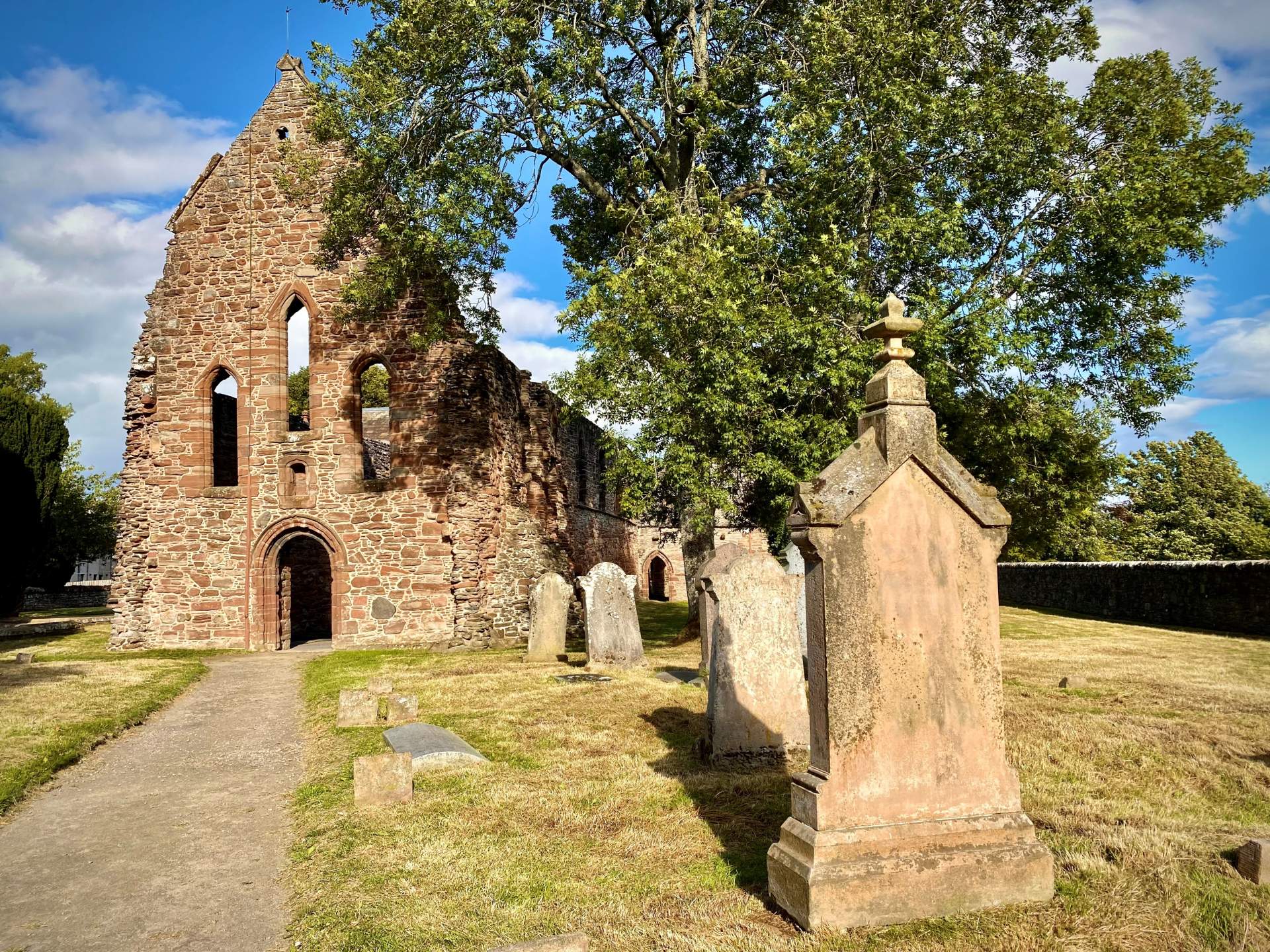
To find out more about the Inverness Outlanders or if you would like to use your own personal audio guide to accompany our Outlander Tour of Inverness, you’ll be pleased to know that Inverness Outlanders has teamed up with GeoTourist, so all you have to do is upload a free app to your smartphone and tune in to the guide. The guide has been written and produced by Inverness Outlanders and friends to help you learn more about the attractions, locations and landmarks on the map as you visit the sites, or from anywhere in the world. Inverness Outlanders
For more Outlander inspiration, head to our Outlander page!

